| Data & Tools | Publications | Training |
What is it?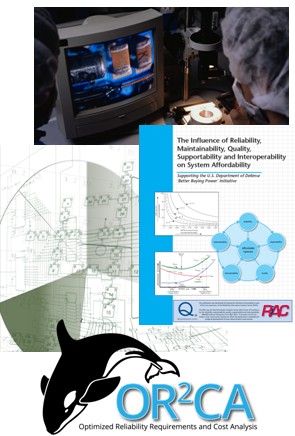
An effective Reliability Program defines an optimum set of activities that will meet customer reliability needs and company objectives cost effectively. It includes realistic reliability requirements/goals, organizational responsibilities, holistic Design for Reliability (DFR) principles, and suitably tailored analysis, test and customer-support approaches.
What’s the payoff?
The ability to develop affordable products and optimize life cycle costs requires that activities be tailored to specific marketplace needs: customer expectations, product application(s), criticality, use environment stresses, and other factors such as warranty/ maintenance/repair strategies that reflect expected product life.
How can we help?
- Tailor a reliability program for a specific product or product line over its entire life cycle
- Perform an independent, objective assessment of your organization’s approach to reliability
- Develop internal reliability policies, procedures, and knowledge bases for use by your managers, designers and reliability staff
- Train your personnel in any aspect of reliability, maintainability, or quality
- Provide an independent, objective evaluation of reliability programs used by your subcontractors and suppliers
Related Data & Tools:
 Warranty CalculatorThe Warranty Calculator planning and analysis tool provides automated calculations and comparisons for ten different warranty types in common use. The tool also includes data, information and references that provide further guidance for over 30 additional warranty types.
Warranty CalculatorThe Warranty Calculator planning and analysis tool provides automated calculations and comparisons for ten different warranty types in common use. The tool also includes data, information and references that provide further guidance for over 30 additional warranty types. Optimized Reliability Requirements and Cost Analysis (OR2CA)Quanterion Solutions Incorporated has developed the Optimized Reliability Requirements and Cost Analysis (OR2CA) tool for one purpose: to present a methodology that develops contractual reliability requirements that are fully aligned with stated End-User Operational Reliability needs and expectations based on all of the categories of root failure cause that contribute to potential mission loss or degradation.
Optimized Reliability Requirements and Cost Analysis (OR2CA)Quanterion Solutions Incorporated has developed the Optimized Reliability Requirements and Cost Analysis (OR2CA) tool for one purpose: to present a methodology that develops contractual reliability requirements that are fully aligned with stated End-User Operational Reliability needs and expectations based on all of the categories of root failure cause that contribute to potential mission loss or degradation. QuART PROThe QuART software series represents the fourth generation of the highly popular "Reliability Toolkit" series of RMQ engineering aids originated in 1988 by Quanterion personnel while working at the Rome Laboratory (formerly Rome Air Development Center).
QuART PROThe QuART software series represents the fourth generation of the highly popular "Reliability Toolkit" series of RMQ engineering aids originated in 1988 by Quanterion personnel while working at the Rome Laboratory (formerly Rome Air Development Center). QuART ER (Enhancing Reliability)This 2011 release features over 2 dozen new or improved tools over QuART PRO. QuART ER updates more than 10 tools and adds more than 15 new tools to the tool set available in QuART PRO, including the "Ask a Quanterion Expert" function that allows users to direct their reliability questions to an ASQ certified reliability expert at Quanterion.
QuART ER (Enhancing Reliability)This 2011 release features over 2 dozen new or improved tools over QuART PRO. QuART ER updates more than 10 tools and adds more than 15 new tools to the tool set available in QuART PRO, including the "Ask a Quanterion Expert" function that allows users to direct their reliability questions to an ASQ certified reliability expert at Quanterion.
 Reliability Self-Assessment Tool (RASTER)Reliability is a discriminating characteristic of products in today’s marketplace, yet many companies are unsure about what is important in designing and manufacturing reliability. They sometimes lack the specialized expertise and/or experience to use their resources wisely in “making reliability happen.” Over the years, RMQSI’s engineers have often been tasked to perform independent reviews (or audits)… Read More
Reliability Self-Assessment Tool (RASTER)Reliability is a discriminating characteristic of products in today’s marketplace, yet many companies are unsure about what is important in designing and manufacturing reliability. They sometimes lack the specialized expertise and/or experience to use their resources wisely in “making reliability happen.” Over the years, RMQSI’s engineers have often been tasked to perform independent reviews (or audits)… Read More
Related Publications:
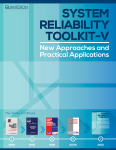 System Reliability Toolkit-VThe System Reliability Toolkit provides technical guidance in all aspects of system reliability, addressing both software reliability and human factors to better reflect the changing requirements of defense community.
System Reliability Toolkit-VThe System Reliability Toolkit provides technical guidance in all aspects of system reliability, addressing both software reliability and human factors to better reflect the changing requirements of defense community.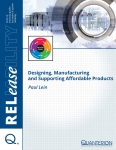 Designing, Manufacturing and Supporting Affordable ProductsIn today’s marketplace, customer expectations for safe, reliable products with new and enhanced features, all at very affordable prices, presents some serious challenges to system engineers and manufacturers. In addition, customers have an expectation that the products they purchase will be economical to own and operate over time. This is especially true in the automotive industry, as numerous vehicle comparison websites are now utilizing cost per mile of operation as a primary comparison metric.
Designing, Manufacturing and Supporting Affordable ProductsIn today’s marketplace, customer expectations for safe, reliable products with new and enhanced features, all at very affordable prices, presents some serious challenges to system engineers and manufacturers. In addition, customers have an expectation that the products they purchase will be economical to own and operate over time. This is especially true in the automotive industry, as numerous vehicle comparison websites are now utilizing cost per mile of operation as a primary comparison metric.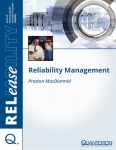 Reliability ManagementReliability is the ability to successfully perform an intended function under the intended conditions. It can be expressed as a probability of success, or as a rate of failure (i.e., failures per hour, cycle, mile or other life unit). Sometimes it is combined with maintainability, the rate at which an item can be repaired, into availability, a measure of the percentage of time that an item is successfully operating.
Reliability ManagementReliability is the ability to successfully perform an intended function under the intended conditions. It can be expressed as a probability of success, or as a rate of failure (i.e., failures per hour, cycle, mile or other life unit). Sometimes it is combined with maintainability, the rate at which an item can be repaired, into availability, a measure of the percentage of time that an item is successfully operating.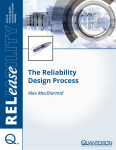 The Reliability Design ProcessWhile manufacturers regularly tout the reliability of their designs, too often one will find that the same organizations do not perform the necessary activities to ensure the longevity of their products. A similar problem is also found in much of the literature on engineering design, in which the importance of durability and reliability is emphasized, yet the actual techniques used to design reliability into the system are not discussed in detail. As a result, engineers are often unsure of which activities to perform, or do not know how to utilize the results of a specific analysis or test.
The Reliability Design ProcessWhile manufacturers regularly tout the reliability of their designs, too often one will find that the same organizations do not perform the necessary activities to ensure the longevity of their products. A similar problem is also found in much of the literature on engineering design, in which the importance of durability and reliability is emphasized, yet the actual techniques used to design reliability into the system are not discussed in detail. As a result, engineers are often unsure of which activities to perform, or do not know how to utilize the results of a specific analysis or test.
- Design for Reliability (DFR)Course Description Designing reliability into a system early in its life-cycle is the most effective means to ensure reliable performance and mission success. It is a well-known metric that the costs to fix a reliability issue for a fielded system is at least ten times more than it is to design the reliability in up-front.… Read More
 Lunchtime Learning SeriesThe “Lunchtime Learning” series is a group of short course tutorials are aimed at providing a basic introduction to a variety of topics in which our community members have expressed an interest.
Lunchtime Learning SeriesThe “Lunchtime Learning” series is a group of short course tutorials are aimed at providing a basic introduction to a variety of topics in which our community members have expressed an interest. How Good Is Your Reliability Approach?Product reliability is an important discriminator in today’s global marketplace but does your organization know how it’s doing compared to competitors in terms of designing and building reliability into its products? Could/should you be doing more “upfront” reliability activities to improve customer satisfaction, to reduce warranty costs, and to reduce in-plant rework costs? Do you… Read More
How Good Is Your Reliability Approach?Product reliability is an important discriminator in today’s global marketplace but does your organization know how it’s doing compared to competitors in terms of designing and building reliability into its products? Could/should you be doing more “upfront” reliability activities to improve customer satisfaction, to reduce warranty costs, and to reduce in-plant rework costs? Do you… Read More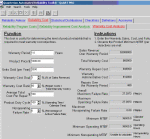 Reliability: Costly, or Cost Effective?There are those who would argue that the costs of reliability activities associated with developing new products have little payoff. Whether we’re talking about commercial products or military systems, we don’t agree. Concepts like Life Cycle Costs, Total Ownership Costs, Reliability-based Maintenance, Performance-Based Logistics, and others clearly recognize the contribution of reliability activities in reducing… Read More
Reliability: Costly, or Cost Effective?There are those who would argue that the costs of reliability activities associated with developing new products have little payoff. Whether we’re talking about commercial products or military systems, we don’t agree. Concepts like Life Cycle Costs, Total Ownership Costs, Reliability-based Maintenance, Performance-Based Logistics, and others clearly recognize the contribution of reliability activities in reducing… Read More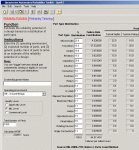 How Much Reliability is Enough?Reliability is defined as performance of a function over time, whether it applies to a commercial product or a military system. Commercial product reliability is usually driven by such factors as warranty cost goals, competitive marketing strategies, and liability concerns while the military wants to meet the operational needs of users while also meeting support… Read More
How Much Reliability is Enough?Reliability is defined as performance of a function over time, whether it applies to a commercial product or a military system. Commercial product reliability is usually driven by such factors as warranty cost goals, competitive marketing strategies, and liability concerns while the military wants to meet the operational needs of users while also meeting support… Read More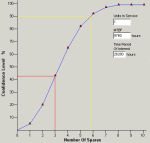 System Spares – What’s the “Right” Answer?Manufacturers are often faced with questions such as:
How often will my system fail?
How many spare parts should I stock?
How confident am I that I will have enough spare parts?
System Spares – What’s the “Right” Answer?Manufacturers are often faced with questions such as:
How often will my system fail?
How many spare parts should I stock?
How confident am I that I will have enough spare parts?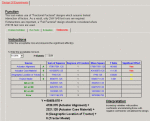 Which Variables Are Critical to Field Reliability? Design of Experiments (DOE) Can Help Optimize Your DesignEngineers are often faced with the problem of optimizing a process that includes a number of input variables. It could be an analysis of a manufacturing process, or even an analysis of a business process. They’re often challenged to find ways to reduce
Which Variables Are Critical to Field Reliability? Design of Experiments (DOE) Can Help Optimize Your DesignEngineers are often faced with the problem of optimizing a process that includes a number of input variables. It could be an analysis of a manufacturing process, or even an analysis of a business process. They’re often challenged to find ways to reduce

